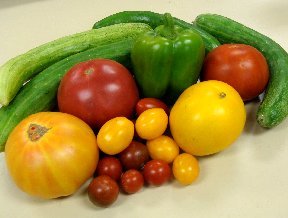Poinsettias are a
holiday tradition and come in a variety of rich colors. The true deep red is a
favorite, but don’t overlook deep burgundy, rich pink, soft peach, or beautiful
creamy white. You’re sure to find one that is perfect for every room. While
blooming, poinsettias like bright but indirect light. Water it when the top
inch of the soil has dried and let it drain well. Do not let it sit in water.
Poinsettias love cooler temperatures and keeping them cooler will extend the
life of their blooms. Keep it away from any drafts, hot or cold, and mist
leaves frequently when blooming.
Decorating Tip: Poinsettias in foil, colorful cachepots, or baskets add festive color to
any room. Place groupings of three near one or both sides of doorways, hearths,
or stairs for a super holiday look.
Cyclamen is a
beautiful holiday plant with spectacular color! The heart shaped leaves are
deep green with silver markings. The flowers rise gracefully above the foliage
on slender stems and will bloom non-stop for several months. Colors range from
deep iridescent red to soft pastels and white. Cyclamen love bright indirect
light, and cooler temperatures will extend the life of its colorful blooms. Do
not let your cyclamen dry out. Keep the soil moist but not soggy. Let the soil
drain after watering before returning it to its decorative container.
Decorating Tip: Cyclamen is a compact plant and perfect for coffee tables, desks or
counter tops. Drop small containers of these plants into your favorite holiday
mugs for a quick holiday decoration to brighten up areas in your home.
Amaryllis in bloom
is breathtaking. Nothing matches its clusters of huge, trumpet shaped flowers
atop long thick stalks for a show-stopping look. Easy to grow, amaryllis is
available in many colors including red, pink, peach, white, and many beautiful
bi-colors. It needs bright light and soil that is evenly moist. Since amaryllis
is top heavy, we recommend putting it into a heavy pot to avoid tipping.
Decorating Tip: Create a festive centerpiece by surrounding a blooming amaryllis with
holiday greenery and ornaments.
These are just a few of my favorite holiday plants! I invite you to visit
your local independent garden center and enjoy their houseplant displays during
the holidays. They will be happy to help you select the right plants for your
needs. Since a brief time in temperatures below 40° Fahrenheit can damage
houseplants, garden centers will wrap your plants for protection during harsh
winter cold and wind. Remember to take your plants home in a warm car and do not
leave them more than a short time in a cold car if you have to make other stops
on your way home.
Remember to add more
beauty and life to your holiday decorating with colorful houseplants. Visit an
independent garden center for creative ideas!
Time
to go….See you in the Garden....
Sandi
Hillermann McDonald
















